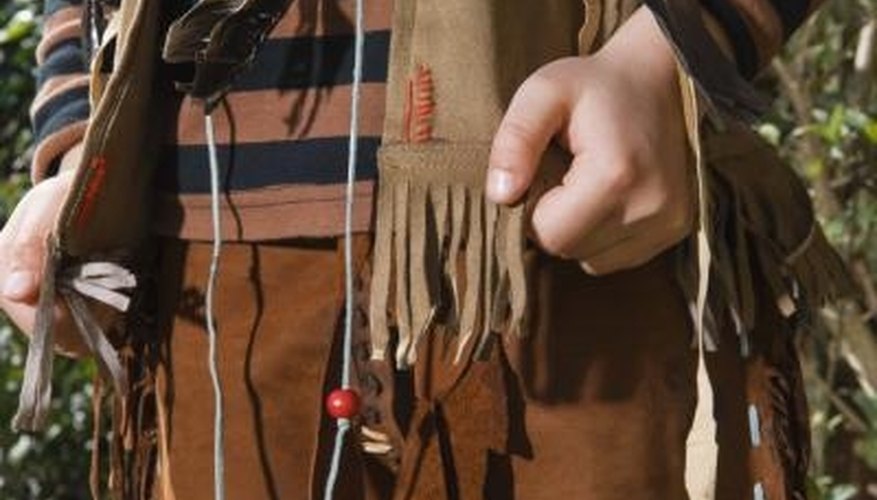
Sewing a deer hide requires waxed thread and specific techniques. Sewing is often required to repair torn sections during the tanning process. Sewing is also required when the hide is converted into clothing and blankets. Sewing hides with decorative stitching requires practice, but a basic and consistent pattern is sufficient for most deer hide applications.
Running Stitch
The running stitch is a simple technique that is ideal for making repairs to small tears in the hide. The technique requires one needle and one piece of thread. Begin by overlapping the edges of the torn pieces. Push the needle through the two pieces of hide and tie an over-hand knot to connect the thread to the hide. Pass the needle through the top of the hide and catch the needle on the bottom of the hide. Pass the needle back through the bottom and catch it on the top of the hide. Continue working the thread forward until you reach the end of the tear. Tie an overhand knot on the end to complete the stitching.
Saddle Stitch
The saddle stitch may be completed free hand, but it is more effective with a leather hole punch. The technique also requires two needles and two sections of thread. Punch holes along the two pieces of hide that are going to be connected. Pass one of the needles through the bottom of the first hole and one through the top of the first hole. Continue crossing the stitches through each of the following holes until you reach the final hole. Double back through the holes for extra durability and tie the two pieces of thread at the final hole.
Back Stitch
The back stitch is used to create a tight stitching design. The technique is best used with waxed thread on deer hide to prevent the thread from tearing through the skin. Insert the needle through the bottom of the two pieces that are being connected. Catch the thread on the top and and insert the thread behind the initial stitch. Push the needle through in front of the initial stitch and repeat the process until you reach the end of the two connecting pieces.
Whip Stitch
The whip stitch is a common leather working technique that is effective for clothing. The process may be accomplished with waxed thread or strips of hide, and the stitches are concentrated along the edges of the fabric. Use a hole punch to create a line of holes and stitch through the holes in a circular motion. The stitching must wrap along the edge of the two pieces. You may also add fabric glue to seal the edge of the clothing.
References
Writer Bio
Zach Lazzari is a freelance outdoor writer specializing in hunting, fly fishing and the general outdoors. He guided fly fishing trips for 10 years in Colorado, Alaska, Montana and Patagonia-Chile. Zach lives in Montana and splits time between the river and keyboard.



